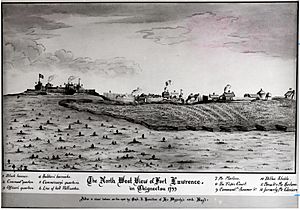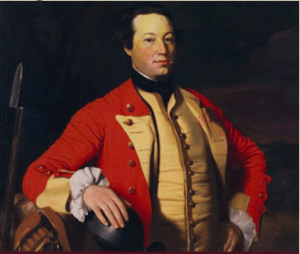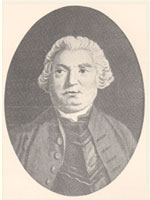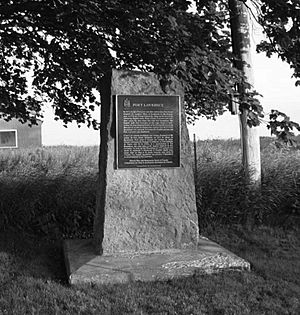Fort Lawrence (Nova Scotia) facts for kids

Fort Lawrence was a British fort built in 1750. It was located on the Isthmus of Chignecto, which is now part of Fort Lawrence in Canada. This fort was important during a time of conflict between the British, French, Acadians, and Mi'kmaq people.
Contents
Why Fort Lawrence Was Built
Even though the British had taken control of Acadia in 1710, many Mi'kmaq people and French-speaking Acadians still lived there. In 1749, the British started a new settlement called Halifax. This led to a conflict known as Father Le Loutre's War.
To protect their new settlements from attacks, the British built several forts. These included forts in Halifax (1749), Bedford (1749), Dartmouth (1750), Lunenburg (1753), and Lawrencetown (1754).
The British also built forts in major Acadian areas to gain more control. These included Fort Edward in Windsor, Fort Vieux Logis in Grand-Pré, and Fort Lawrence in Chignecto. An older British fort, Fort Anne, was already in Annapolis Royal.
Building the Fort

In 1750, a British army group led by Major Charles Lawrence arrived at a village called Beaubassin. The French priest Jean-Louis Le Loutre ordered the village to be burned. This was to stop the British from using it. Lawrence's troops were outnumbered and had to leave.
They returned in September 1750 with more soldiers. They fought in the Battle at Chignecto. After the French militia left, Lawrence began building Fort Lawrence. It was a wooden fort built on a ridge. This spot was right next to the Missaguash River, which was the border between Acadia and Nova Scotia. From Fort Lawrence, they could see Fort Beausejour, a French fort.
Captain John Handfield finished building Fort Lawrence. By August 15, 1752, Lt. Col. Robert Monckton was in charge of the fort.
In 1753, Captain George Scott took command. In May, two British soldiers were killed by warriors. Scott later left command in 1754, and Captain John Hussey took over.
Fort Lawrence, along with Fort Edward and Fort Anne, received supplies by ship. These ships brought food, new soldiers, and carried officers and their families.
French and Indian War
The Battle of Fort Beausejour marked the end of Father Le Loutre's War and the start of the French and Indian War in the area.
Battle of Fort Beausejour
On June 4, 1755, the British began their plan to take all of France's land in North America. British soldiers and New England militia attacked Fort Beauséjour from Fort Lawrence. This attack was led by Lt. Col. Robert Monckton. The British took control of Fort Beauséjour by June 16, 1755. They then renamed it Fort Cumberland.
Expulsion of the Acadians
After the battle, British forces tried to make the Acadians in the area sign an oath of loyalty to the British king. However, the Acadians wanted to stay neutral and refused to sign.
In August 1755, the British began the Expulsion of the Acadians. This was an order given by Governor Charles Lawrence, who had overseen the building of Fort Lawrence. Both Fort Beausejour (now Fort Cumberland) and Fort Lawrence were used to hold Acadian men prisoner. One famous Acadian held at Fort Lawrence was Joseph Broussard.
On October 1, 1755, the Acadian prisoners at Fort Lawrence escaped, including Joseph Broussard.
The British army then burned Acadian homes to stop them from returning. Since the British were now using the larger Fort Cumberland, they decided to destroy Fort Lawrence. This was to prevent any Acadians who had escaped into the forests from using it for shelter. Fort Lawrence was burned down on October 12, 1756, only six years after it was built.
Commanders of Fort Lawrence
- John Handfield (1752)
- Thomas Collier (military officer) (died 1752)
- Robert Monckton
- George Scott (1753-1754)
- John Hussey
Fort Lawrence National Historic Site
The area where Fort Lawrence once stood was named a National Historic Site of Canada in 1923.
Today, the site of Fort Lawrence is an empty field behind a visitor center. There are plans to rebuild the fort, but money for the project has not yet been found. People have found many old items from Fort Lawrence during archaeological digs. Some of these items are on display at the Fort Beauséjour National Historic Site.




